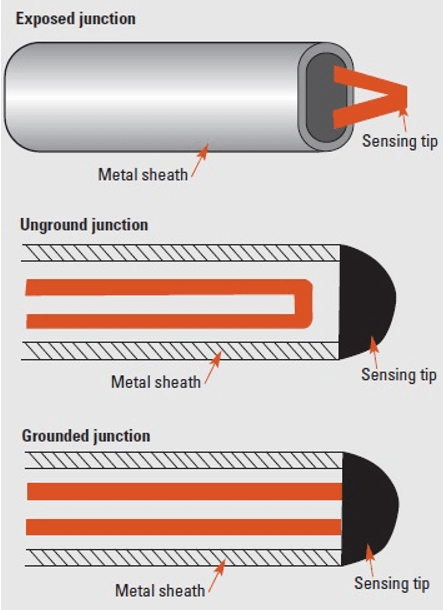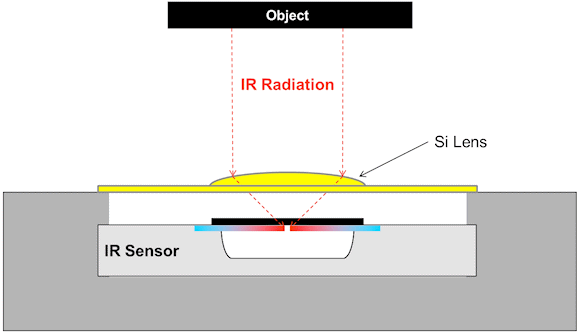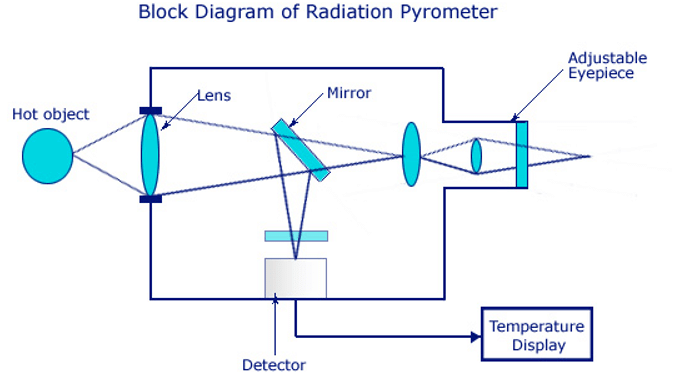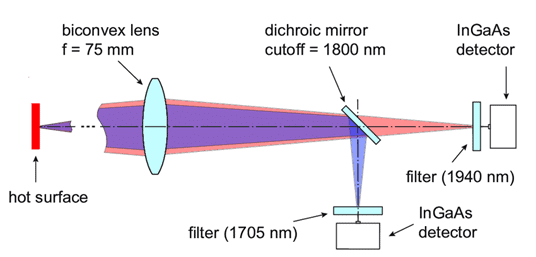Introduction of Pyrometers | Sensor & Industrial Instrumentation - Electronics and Communication Engineering (ECE) PDF Download
Pyrometers
➢ Radiation can be used to sense temperature, by using devices called pyrometers, with thermocouples or thermopiles as the sensing element, or by using color Figure 10.7 Sheathed thermocouples: (a) junction connected to sheath, (b) junction insulated from sheath, and (c) exposed junction for high-speed response
Figure 10.7 Sheathed thermocouples: (a) junction connected to sheath, (b) junction insulated from sheath, and (c) exposed junction for high-speed response
comparison devices [6]. Pyrometers can be portable, and have a response time of a few milliseconds.
➢ A thermopile is a number of thermocouples connected in series, which increases the sensitivity and accuracy by increasing the output voltage when measuring low temperature differences. Each of the reference junctions in the thermopile is returned to a common reference temperature. ➢ Radiation pyrometers measure temperature by sensing the heat radiated from a hot body through a fixed lens, which focuses the heat energy on to a thermopile. This is a noncontact device [7, 8]. For instance, furnace temperatures are normally measured through a small hole in the furnace wall. The distance from the source to the pyrometer can be fixed, and the radiation should fill the field-of-view of the sensor. Figure 10.8(a) shows the focusing lens and thermocouple setup, using a thermopile as a detector.
➢ Radiation pyrometers measure temperature by sensing the heat radiated from a hot body through a fixed lens, which focuses the heat energy on to a thermopile. This is a noncontact device [7, 8]. For instance, furnace temperatures are normally measured through a small hole in the furnace wall. The distance from the source to the pyrometer can be fixed, and the radiation should fill the field-of-view of the sensor. Figure 10.8(a) shows the focusing lens and thermocouple setup, using a thermopile as a detector. ➢ Optical pyrometers compare the incident radiation to the radiation from an internal filament, as shown in Figure 10.8(b). The current through the filament is adjusted until the radiation colors match. The current then can be directly related to the temperature of the radiation source. Optical pyrometers can be used to measure temperatures from 1,100° to 2,800°C, with an accuracy of ±.
➢ Optical pyrometers compare the incident radiation to the radiation from an internal filament, as shown in Figure 10.8(b). The current through the filament is adjusted until the radiation colors match. The current then can be directly related to the temperature of the radiation source. Optical pyrometers can be used to measure temperatures from 1,100° to 2,800°C, with an accuracy of ±.
|
22 videos|33 docs|29 tests
|





















